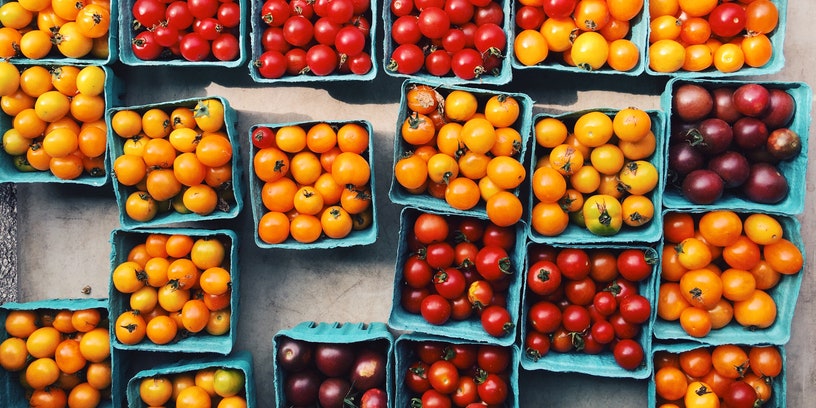Buying organic is one of those things we know we’re supposed to do without hesitation. It means we’re supporting the environment and sustainable farming practices, while also cutting back on how many pesticides we’re consuming. But the reality is that buying exclusively organic foods can be extremely unaffordable. Depending on where you live, it may even be impossible—not all grocery stores have an expansive organic section.
First off, it’s important to understand what organic means—and what it doesn’t.
For produce to be labeled organic, it has to meet certain USDA specifications, which make for more sustainable, environmentally friendly farming practices and cut back on our pesticide exposure. The criteria address things like soil quality, animal-raising practices, pest and weed control, and use of additives. In order to get certified organic produce, producers must show that it was grown on soil that has been free of prohibited substances, including most synthetic fertilizers and synthetic pesticides, for at least three years. That doesn’t mean there are no synthetic pesticides, but that only certain ones are allowed. And to make things even more complicated, the list of prohibited substances changes from time to time. Organic products are also GMO-free.
For meat, organic means the animals were “raised in living conditions accommodating their natural behaviors (like the ability to graze on pasture), fed 100 percent organic feed and forage, and not administered antibiotics or hormones.” The exception is that antibiotics may be administered when they’re sick and it’s medically necessary. The antibiotics themselves don’t hang around in the meat after the animals are slaughtered, so antibiotic residue, if any, isn’t cause for concern if you eat non-organic meat. The real issue: Microbiologists who study antibiotic resistance recognize that overzealous and unnecessary use of antimicrobials in farm animals may be contributing to the worldwide epidemic of antibiotic resistance (though not as much as overuse of antibiotics by humans does). If you can buy organic meat, it’s not a bad idea. But it’s more of a global safety issue than about whether or not the meat you bought is dangerous for you. The FDA requires manufacturers of non-organic meat to demonstrate that the level of hormones that end up on your plate is below what’s deemed safe.
Also, remember that an organic label doesn’t automatically make a food healthier.
“When we choose organic foods we are lowering the amount of pesticides and chemicals that could potentially be getting into our food supply,” Lori Zanini, RD, spokesperson for the Association of Nutrition and Dietetics, tells SELF. Buying organic is good for our planet, and organic foods are often fresher because they do not contain any preservatives (so they can’t sit around on store shelves for weeks at a time). But it’s a common misconception that “organic” always means “healthy.”
Most evidence shows that organic versions of healthy foods probably aren’t any more nutritious than non-organic, though the answer isn’t 100 percent clear. Some research suggests pesticide residue may be more harmful at lower levels than we think, but again, more studies need to be done (many of them are still only animal studies). According to the Mayo Clinic, organic regulations ban or severely restrict the use of food additives, processing aids, and fortifying agents like preservatives, artificial sweeteners, colorings, and flavorings. This may make them healthier in certain ways, but an organic orange isn’t going to pack more vitamin C than a regular one. When it comes to snacks like cookies and crackers, junk food is junk food, whether the flour and sugar is organically sourced or not.
While choosing organic foods over non-organic is a good idea when you can, it’s not the end of the world if you have to pick and choose only a few foods to buy with the label.
“If you can’t afford to buy organic, I would simply focus on choosing organic when it comes to the ‘Dirty Dozen,’” Zanini says. The “Dirty Dozen” is a list the Environmental Working Group puts out indicating which items in the produce isolate tend to have the highest concentrations of pesticide residues. Although the government does regulate non-organic produce to make sure the residues we consume are below a safe threshold, not every piece of fruit in every store gets tested (and imported produce adds another level on uncertainty). So each year, the EWG looks at the USDA and FDA’s sampling data for the most popular fruits and veggies and calls out the ones with the highest pesticide levels. The list is new every year, but the same things tend to keep cropping up.
.

